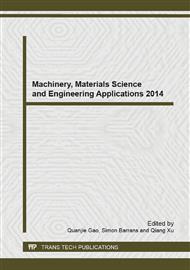p.197
p.201
p.205
p.209
p.213
p.217
p.222
p.226
p.232
Design of a Four-Station Translational and Rotary Worktable for Special Occasions
Abstract:
A newly developed four-station translational and rotary worktable can be applied for complex human-machine hybrid operations and dangerous heat treatment operations. And the design can guarantee closed operations without involvement of human when the worktable rotates to the concentrated area, while the installation or other manual processing when the worktable rotates to the separate area. In addition, by designing innovative rotating and track-changing mechanism and the direction-holding mechanism, the work piece remains the constant direction in the rotation process. Furthermore, the interference problem of the Geneva mechanism of the track-changing fork is analyzed. Consequently, the smaller the angle of fork notch is, the smaller the force that fork reacts on the support shaft is, meanwhile, the strength can be satisfied more easily. The optimal angle of Y-fork is 90 degree. The application of the four-station translational and rotary worktable can achieve multi-step continuous process, save workspace and improve production efficiency.
Info:
Periodical:
Pages:
213-216
Citation:
Online since:
June 2014
Authors:
Price:
Сopyright:
© 2014 Trans Tech Publications Ltd. All Rights Reserved
Share:
Citation:


